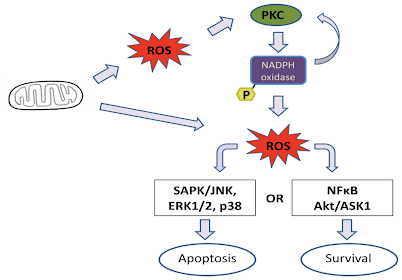Protein Kinase C (PKC)
Protein kinase C is a kinase that
phosphorylates serine and threonine deposits in many objective proteins. It was
first distinguished in cow-like cerebellum by Nishizuka and co-laborers as a
protein kinase that phosphorylated histone and protamine. Since then, at that
point, its inclusion in numerous biological processes has been protein kinase c inhibitor illustrated,
including improvement, memory, separation, multiplication and carcinogenesis.
Once remembered to be a solitary protein, is presently known to comprise a huge
group of compounds that contrast in structure, cofactor prerequisites and
function. Ten isoforms of have been recognized, changing in tissue articulation
and cellular compartmentalization, taking into consideration specific
interactions with substrates.
The PKC family has been partitioned into
three gatherings, contrasting in the chemicals' cofactor prerequisites;
conventional isoforms that require calcium and diacylglycerol for activation;
novel isoforms that require neither calcium nor DAG. Protein kinase
C is a distinct kinase family that was initially classified as a PKC
subgroup. The -related kinases contain kinase areas homologous to Pkc's. These
are not closely connected with the protein
kinase c inhibitor family because of totally different administrative
spaces; notwithstanding, they can be considered to be important for the Protein kinase C superfamily.
All PKCs have a
phospholipid-restricting area for film interaction. The overall structure of a
PKC molecule consists of a catalytic and an administrative area, composed of
various conserved locales, blended with districts of lower homology, the
variable spaces.
Some, on the off chance that not all,
PKC isoforms can be proteolytically cleaved at the pivot between the
administrative and catalytic areas by proteases such as the calcium-activated
calpain, creating a free, cofactor-autonomous, catalytic subunit known as protein kinase c inhibitor
This 'calpain product' ought not be
considered an 'unregulated' chemical since its age is, in fact, directed by proteolysis.
Cleavage is a physiologically applicable substitute activation mechanism for
isozymes such as PKCδ, occurring in processes like apoptosis, where caspases
seem to play significant parts.
All PKCs, except the isoform, display
purported PEST sequences, hydrophilic polypeptide portions enriched in proline,
glutamic acid, serine and threonine, which target proteins for debasement by
the proteasome. An extra degree of complexity is clear after the perception
that dephosphorylation of activated PKCs evidently inclines them toward
ubiquitination and corruption. The downregulation of PKC is hence additionally
managed by specific phosphatases and ubiquitin ligases.
PKC isoforms are processed by three
arranged preparing phosphorylations. The main phosphorylation is catalyzed by
phosphoinositide-subordinate kinase and occurs at the activation circle. This
phosphorylation triggers two phosphorylations at the carboxy-end Protein
kinase C. Each phosphorylation occasion induces
conformational changes in the protein kinase c inhibitor molecule that outcome in adjusted warm dependability, resistance
to phosphatases and catalytic competency.
The principal complete crystal
structure of protein kinase c inhibitor was gotten for the novel isoform θ. Past structural data was
acquired from crystals of the administrative spaces, and by displaying the
catalytic area with protein kinase A.




Comments
Post a Comment